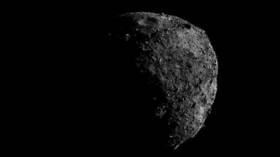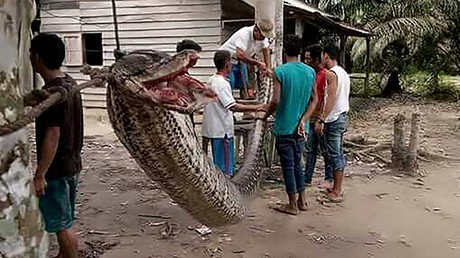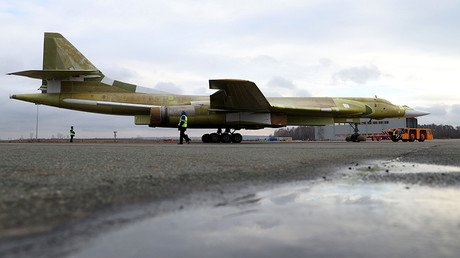Bennu revealed: NASA publishes most-detailed PHOTOS of Earth-bound, water-bearing asteroid yet

NASA’s OSIRIS-REx spacecraft has sent back the most detailed images to date of the Bennu asteroid, marking the continued success of arguably one of the most ambitious space exploration missions in human history.
The latest images of Bennu were taken by the spacecraft’s NavCam 1 navigation camera on January 17 at a distance of roughly a mile (1.6 kilometers) above Bennu’s surface with a 1/700 second shutter speed.
As I fly around Bennu during Orbital A, my scientific cameras are not collecting data. But my NavCam 1 imager is taking "OpNav" (short for optical navigation) images like these to help monitor my path around the asteroid.Image details ➡️ https://t.co/BLXn6GU6Mypic.twitter.com/ZCTjYVxpnu
— NASA's OSIRIS-REx (@OSIRISREx) January 23, 2019
The images showcase Bennu’s south pole in truly incredible detail as the initial surveys of the potentially Earth-bound asteroid continue.
I'm currently a little more than 95 million kilometers (59 million miles) from home. At this distance, it takes about 10.5 minutes round-trip to communicate with Earth. 🌏 ↔️ 🛰 #WhereIsOSIRISRExhttps://t.co/rACre4nDe4pic.twitter.com/gW34YGVuG2
— NASA's OSIRIS-REx (@OSIRISREx) January 21, 2019
The OSIRIS-REx mission was launched in 2016 with the stated objective of studying and collecting samples from the 1,700ft-wide space rock.
The probe arrived at Bennu in December 2018, having completed its 1.2 billion-mile journey from Earth, but only recently began orbiting the asteroid which is the smallest object that has ever been orbited by a man-made spacecraft.
For those keeping track at home... I've traveled just under 2.2 billion km (1.4 billion miles) since leaving home in Sept. 2016.I'll remain in orbit around Bennu until late February when I begin a series of flybys for Detailed Survey. More details: https://t.co/rACre4nDe4pic.twitter.com/39kkEYTzNC
— NASA's OSIRIS-REx (@OSIRISREx) January 28, 2019
Bennu is so small it possesses a weak gravitational field which is why the NavCam 1 is so critical to keeping pace with Bennu and maintaining the rather difficult orbit.
Just days after reaching Bennu, OSIRIS-REx sent back groundbreaking data revealing that the asteroid contains water. The craft will collect at least two ounces of samples from the asteroid and bring it back to Earth in 2023.
Like this story? Share it with a friend!














